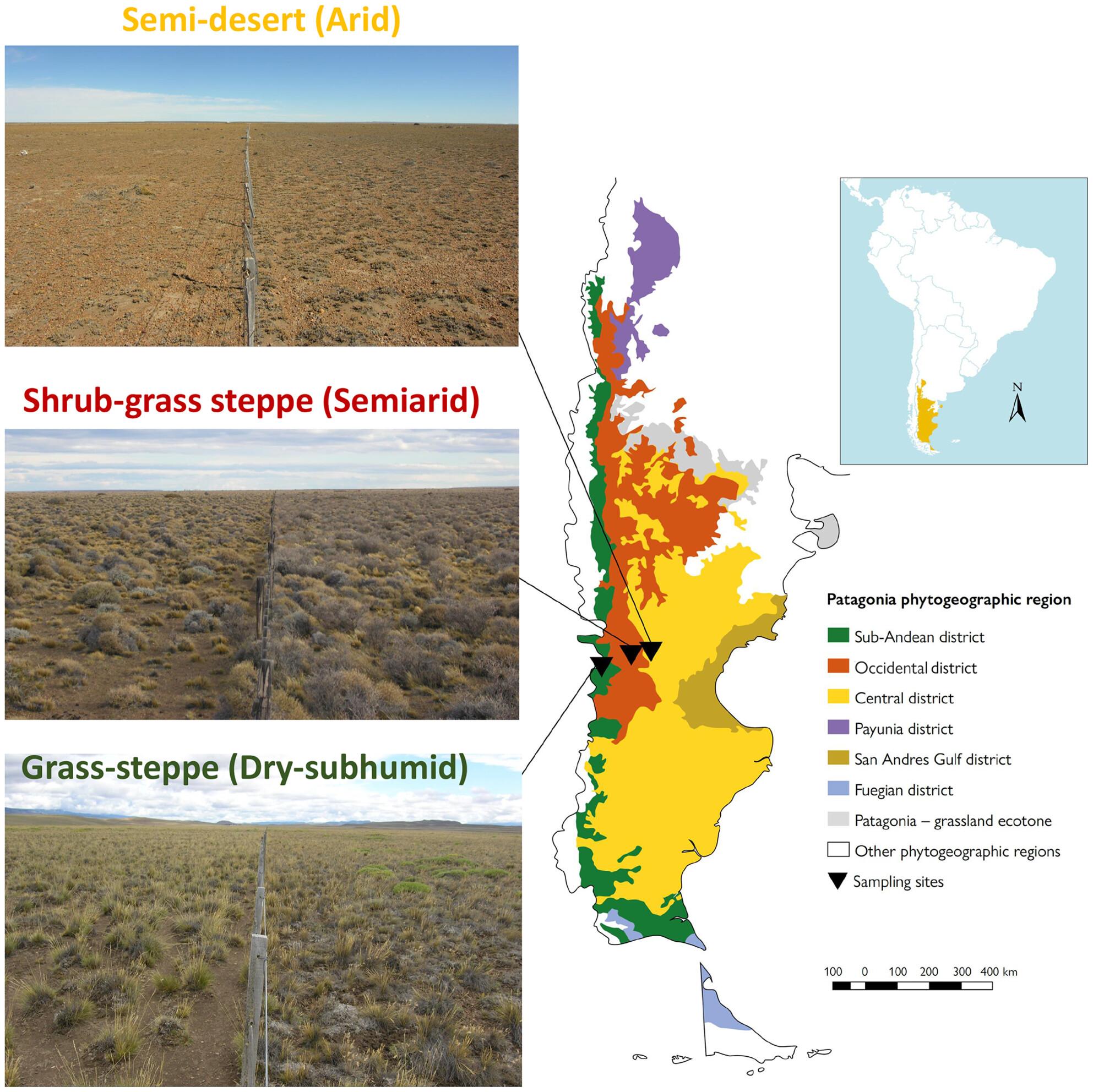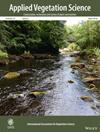Effects of livestock grazing intensification on plant communities of Patagonian drylands increase with increasing aridity
Abstract
Question
Livestock grazing affects plant communities in drylands worldwide. However, our current understanding of the Patagonian drylands has primarily been derived from comparing exclosures with grazing conditions or from single-site grazing gradients. The pending question is: do impacts of grazing intensification on Patagonian plant communities change along aridity gradients?
Location
Patagonia, Argentina.
Methods
We surveyed vegetation cover of perennial species in paddocks with different sheep-grazing pressure (ungrazed, lightly, moderately, and intensively grazed, based on long-term stocking rates), in three plant communities located along a regional aridity gradient: a semi-desert (arid), a shrub–grass steppe (semi-arid), and a grass steppe (dry sub-humid). In these communities, we analyzed the effects of grazing pressure on the total cover of vegetation, the cover of dominant plant life-forms (grasses and shrubs), the plant species diversity, and the traits of dominant plant species.
Results
Intensification of sheep grazing significantly decreased total vegetation cover in the semi-desert, but not in the steppes. Although grazing decreased the cover of grasses (particularly of the highly preferred ones) in all communities, in the shrub–grass and grass steppes this reduction was offset by an increase in the cover and size of shrubs. Plant diversity was not consistently affected by grazing pressure in these communities. Traits of dominant plant species partially explained community responses to grazing intensification.
Conclusions
Livestock grazing intensification reduces the forage quantity and quality of Patagonian plant communities, but the severity depends on plant community types. In semi-deserts (the most arid), grasses were drastically affected, while in the steppes, the grazing effects on grasses were low and partially compensated by an increase in the cover and size of shrubs, which fulfill critical roles other than forage provision. It is fundamental that grazing pressure be adapted to forage resource availability for each community type to achieve sustainable management in the context of climate change.


 求助内容:
求助内容: 应助结果提醒方式:
应助结果提醒方式:


